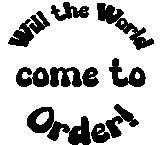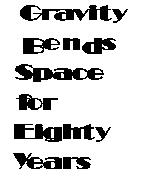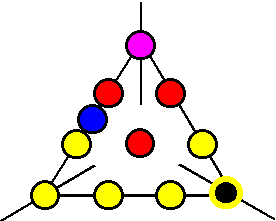|
Going
back to the aftermath of the war-to-end-all-wars, we find the year
1919 afresh with the dead and mutilated soldiers of the first
chemical war, the first air war, the first tank war, and possibly the
first biological war. In U-boat crosshairs the sailors, passengers
and cargo became the undifferentiated one, and many souls became one
with the ocean. Twelve million tons of allied shipping was sunk by
subs. While technically straightforward, it may not be humanly
possible to compile battlefield statistics attributed to the new
machine gun firing at ten bullets per second.
In
1919, Napoleon was not a brand of brandy and Big Bertha did not need
protection of a trademark. With an eighty-mile range, Big Bertha the
cannon sent its explosive charge for the first time over the horizon
straight downtown. The first world war, brought upon Europe by the
dislocations and opportunities arising from the industrial
revolution, was declared by a few men for the benefit of a few. The
invention of synthetic rubber, which today would be greeted with a
stock runup, found new motorized divisions on the road. There was no
middle for the middle class and an aspiring young man was simply the
common man. Common man could and did offer a life of loyalty in
exchange for a crisp uniform, education, medical care, and promise of
the piece of the action. Thus, the winning of spoils for the Emperor
could be seen as a triumph over the poverty of the human condition.
In the spinmaster's mind of the day, giving a man a job was to have
him gainfully fighting for the power that is ours by taking things
away from the power that is theirs.
The
year 1919 also brought a swift international execution of a
scientific experiment. 1919 happened to be a year offering a total
solar eclipse and the opportunity to validate a theory that would
usher in real knowledge about the order of the universe. The triumph
of the 1919 experiment was to be something everybody hoped for. The
uncontrolled breakdown of the world order could be juxtaposed against
the human understanding of the order of the universe. If we could
understand the order of the universe, we could take it as a model for
our own human order. That was the Maxim. Within the 1919 experiment
there was not only hope, there could be a proof. Imagine, we did not
need a fictional character, a politician, or a spiritual leader to
declare: "Make it so!" because it was so and it was good. |
 |
|
From
1919 through the present, Einstein's general theory of relativity
stands out as one of the singular achievements of the 20th century.
Black hole, wormhole, gravitational lensing, gravity waves, and the
big bang - all entered the hip vernacular of the modern citizen. The
platform we build on today was delivered in 1919 when the tenet of
the general theory of relativity was thought to have been confirmed
by experiment: Light from a distant star indeed changed its path when
it passed close to the body of our sun. Backed by eighty years of
consensus, the scientist can stand up unflinchingly today, proclaim
the facts of a case, explain this and that about the universe, and
quite likely get funding for the latest extension of this theory. As
solid as the general theory of relativity may seem, however, there
may be less to it than meets the eye.
Light
traverses spatial distance with parameters that can be readily
measured. Space gives no preference to the components of light and
all of light's energies, i.e., colors, travel at the same speed. When
light travels through mass or matter - such as through glass, water,
air, or the sun's corona - lights of different colors propagate at
different speeds and different angles, and that is how a rainbow or
the crimson evening sky comes about. In the general theory of
relativity, it is self evident that inside an accelerating object,
say a room, light enters through the window, but strikes the opposite
wall of the room below the geometrically straight line because the
room is accelerating upward, while light travels at finite speed.
There is no contention that all frequencies of light trace the same
curved path inside the accelerating room. Einstein, however, extended
this axiom and postulated that acceleration
is gravity. The 1919
experiment was set up to verify that "if light's path bends as a
result of acceleration, then light's path will bend as a result of
gravity." From this point on, matter is thought to move because
it is on a path that is actually sloping. It moves more the more
space is curved, and the more it is curved, the more mass there is,
and then it moves even more. In the end, matter gets all balled up in
a black hole.
The
starlight of 1919 passed close to the surface of the sun to allow
gravity do its thing on the light. However, light also passed through
the sun's corona and, passing through such matter, light's path bent.
This is an alternate explanation of this observation, and a new
experiment would be able to confirm the new interpretation. Light's
path does not bend because it is in proximity to a mass(ive) body.
Light's path bent in 1919 and will bend in 1999 because light passes
through and optically interacts with matter comprising the sun's corona.
For
now, let us accept the new interpretation and further resolve that
gravity has no influence on light or the space in which light
propagates. Gravity results in several things, and one of them is
acceleration, but acceleration is not gravity. Being pressed into the
seat of an accelerating rocket ship, you are not subject to gravity
because gravity does more than just keep you on the floor. Swimming
does not make you a fish even if all fish are swimmers. The results
obtained by the general theory of relativity remain applicable to
mutually accelerating independent objects, but these results cannot
be extrapolated to gravity in general and to the gravitational
effects on space in particular.
To resolve the dissimilar
interpretations of the observed bending of the light's path, the
following experiment is proposed: Duplicate the original experiment
and additionally record the spectral data of the observed distant
star. If the bending effect is optical, we will record a spectral
spread akin to the prism effect. If the effect is gravitational, the
prism effect - the rainbow - would not exist. |
 |
|
It
is easy enough to point to tides and earthquakes as events that
dissipate the energy of moving bodies such that, eventually, all
things grind to a halt. When pressed, the physicist throws the book
at infidels, to wit: The Second Law of Thermodynamics. [Quickly, this
law tells us that everything ends up homogenized.] Enjoying the
accusation of being nonconformist, we merely confirm that this law
applies to closed systems only - those systems that are completely
isolated from everything else. Altogether now, we can make a
statement that a lifetime supply of classical chalk will never figure
in explaining how spinning bodies and spinning compositions we
observe could conceivably do so. We can make a spinning galaxy spin
faster by moving the mass closer to its center because the rotating
energy is conserved, but the classical physicist has no clue on how
the angular rotation happened to get there in the first place.
Should
you inquire about the flatness of our solar system or the pancake
shape of our galaxy, the answer invariably is: "Oh, it's the
spin." Presently, however, there is no framework that would
entice moving bodies to spin and flatten out into almost
two-dimensional congregations. Would matter give up on the third
degree of freedom for the sake of organizing itself, or do we need to
unveil a cosmic magician giving each galactic plate a twirl every so
often? Perhaps put some well-known authority in charge of that.
In
the days the earth was flat and when the stars were stagelights of
heaven, it took a strong beast to carry the burden of matter. Atlas
was strong enough, by definition, but turtle has a strong rounded
shell and could be big enough to qualify as well. But questions
persisted. If the turtle is holding the earth, what is supporting the
turtle? It is said the proponent of the turtle theory asserted:
"It's turtles all the way down!" Yet, the turtle pyramid is
with us to this day. When there is a need to rationalize the spin of
heavenly assemblies, there inexplicably appear larger spinning
structures or larger shearing fields, at which point the computer has
no difficulty transferring the rotation to where it is needed.
N-bodies
under gravitational interaction swing and collide and sometimes
break up and sometimes accumulate and come apart again because their
energy in the form of the dynamic punch called momentum is conserved.
When bodies physically contact, the momentum that is taken from one
body is imparted on another - always and exactly adding up to the
same value before and after. The conservation of momentum can also be
expressed as the conservation of energy that is carried by moving
bodies. The moving energy has the component of the linear or straight
motion and that of the spinning or angular motion.
When
an object falls toward the earth, we cannot help but notice that the
object's speed - its moving energy - continues to increase.
Classically, the falling apple need not be cognizant of the earth
because the apple is a completely independent object that is falling
in a trajectory that is actually, really, and invisibly curved.
In
the quantum mechanical foundation of gravitation, however, the apple
moves toward the earth because there is a continuous addition of
momentum to both the apple and the earth. As momentum grows, both the
apple and the earth accelerate toward each other. We can visualize
the momenta as two sharpened pencils pointing at each other, one
belonging to apple and the other to earth, where both pencils are
getting longer. The "magic" of quantum mechanics appears
when we enforce the conservation of energy, because, then, the
addition of every bit of momentum is instantaneous and simultaneous
in both the apple and the earth. In effect and in fact, time is
subordinated to the conservation of energy. The magic is not the
instantaneous nature of momentum's appearance because, on the atomic
scale, this phenomenon is the working principle of a transistor. What
is new is the ability of this mechanism (collapse of the wavefunction
in physics speak) to operate on a scale outside of the atomic dimensions.
The
not-so-magical part is that the sum of the two momenta is always
zero, and thus the momentum imparted upon the apple is the same as
the momentum imparted upon the earth, while both momenta point in the
opposite direction and even out each other. In other words, we take a
stand that energy does not just appear and also that the moving apple
trajectory need not perform explanatory contortions. Quantum
mechanically, then, the apple and the earth form an interacting and
mutually accelerating system where the energy is conserved within
this system even though there is no physical contact between the two.
The apple accelerates toward the earth, but the system comprised of
the apple and the earth is not accelerating.
The
beautiful part of quantum mechanical gravitation is that the angular
momentum is exchanged and conserved as well. As the two pencils
representing the momentum are getting longer, they also commence
spinning. For energy to be conserved, one pencil spins clockwise
while the other counterclockwise - and also the larger body will spin
slower since each body gains the same rotational energy. Well, for
the first time we can explain why everything in the universe is spinning.
|
Let
the Universe Spin |
|
If
we believe all physical objects are independent, then the only way
to move an object at will is to impart momentum to it via an
explosive charge or eject mass from it in the form of a gas or
particle stream. Quantum mechanically, however, we need to figure out
how to reverse the momentum addition mechanism between two physical
bodies - that is, how to get the two pencils to point away from each
other. There is every reason to regard this mechanism as reversible
because the sum of the two momenta is zero, coming or going. For
better or for worse, this ain't rocket science.
Solar
systems and their planets have the mass and thus are the source of
momentum needed to attain high speeds for the galactic travel.
Different celestial bodies can be selected and momentum vectored,
fairly quickly, to the selected body. Arched solar systems form
high-density "momentous" rivers that can be tapped for
longer-range travel. When the billions of Milky Way solar systems are
chartered (and most likely, some are already settled), one can think
of moving intergalactically. Although the formalizing geometry
differs, two or more galaxies exchange momentum as well, and in a
particular context the energy is conserved intergalactically as well.
I
hope we leave to our children more than just a mountain of . . . It's
the whole universe out there. See you there |
Propulsion?
Scotty, for hundred years now, I don't want propulsion |
